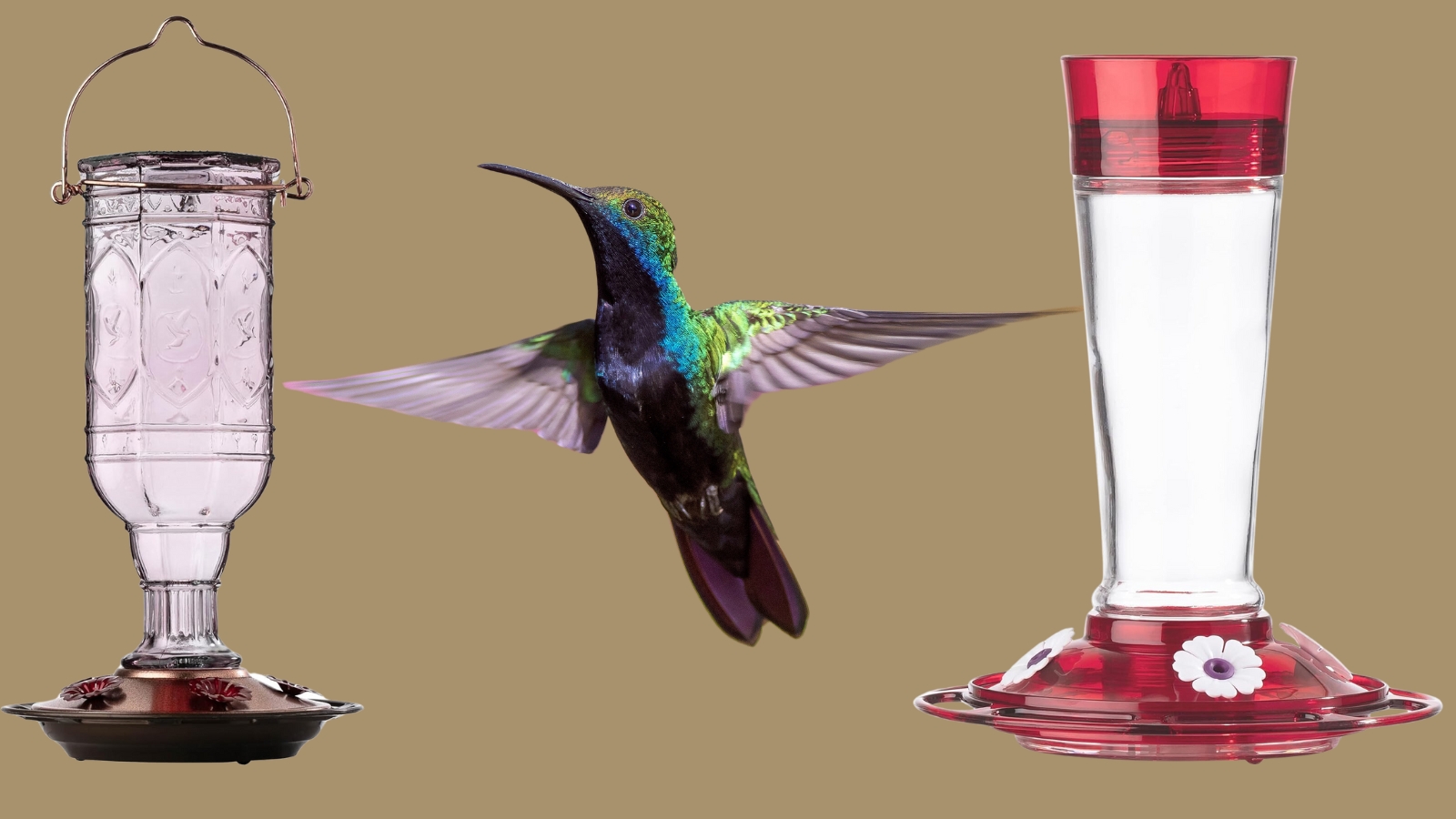Quick Answer: Glass hummingbird feeders aren’t necessarily better than plastic ones – each type has its advantages. Glass feeders are typically more durable against scratches and easier to clean thoroughly, while plastic feeders are more affordable and less likely to break if dropped. Your best choice depends on factors like your budget, location, and maintenance preferences.
Have you ever wondered whether you should spend extra money on a glass hummingbird feeder, or if a plastic one will work just as well? The debate between glass and plastic hummingbird feeders has been going on for years, and for a good reason.
In this blog post, we’ll explore the pros and cons of both materials to help you make the best choice for your garden.
Key Takeaways: Are Glass Hummingbird Feeders Better Than Plastic?
- Glass hummingbird feeders tend to last longer and are easier to clean than plastic ones, but they’re more expensive and breakable.
- Plastic feeders are more affordable and durable against drops, though they may degrade faster in sunlight.
- Both materials can be excellent choices depending on your specific needs and circumstances.
Related Post: Are Ants Bad for Hummingbird Feeders?
Glass vs Plastic Hummingbird Feeders: A Complete Comparison
When choosing between glass and plastic hummingbird feeders, several key factors come into play. Let’s break down the differences:
Durability and Longevity
Glass feeders typically last longer when properly maintained. They resist scratches better than plastic and don’t yellow or become cloudy over time. However, they can break if dropped on hard surfaces.
Plastic feeders might not last as long, but they’re more likely to survive accidental drops. That said, they can become brittle and crack after extended sun exposure.
Cleaning and Maintenance
Glass feeders are easier to clean thoroughly because:
- The smooth surface prevents bacteria buildup
- They’re less likely to retain old nectar residue
- You can use hot water without worrying about warping.
Plastic feeders require more careful cleaning as they can:
- Develop tiny scratches that harbour bacteria
- Retain old nectar smells
- Warp if cleaned with very hot water.
Cost Comparison
Here’s a simple breakdown of what you might expect to pay:
| Feature | Glass Feeders | Plastic Feeders |
|---|---|---|
| Initial Cost | £15-40 | £5-20 |
| Replacement Frequency | Every 3-5 years | Every 1-2 years |
| Maintenance Cost | Lower | Higher |
Weather Resistance
Glass feeders handle weather changes better. They don’t expand and contract as much with temperature changes, which helps prevent leaks. Plastic feeders might develop leaks more quickly as they age and go through temperature cycles.
Making the Right Choice for Your Garden
Consider these factors when deciding:
- If you have a concrete patio, plastic might be safer
- For areas with intense sun, glass might last longer
- If you’re on a budget, starting with plastic is fine
- For long-term use, glass could be more cost-effective.
Final Thoughts
Whether glass or plastic is “better” really depends on your specific situation. Both materials can serve well as hummingbird feeders when properly maintained. The most important factor isn’t the material – it’s your commitment to keeping the feeder clean and filled with fresh nectar for your tiny visitors.
Have you tried both types of feeders? We’d love to hear about your experience! Share this article if you found it helpful for making your decision.
Frequently Asked Questions (FAQ: Are Glass Hummingbird Feeders Better Than Plastic?)
Q: How long do glass hummingbird feeders typically last?
A: With proper care, glass hummingbird feeders can last 3-5 years or more. The most common reason for replacement isn’t the glass itself breaking down, but rather worn-out plastic parts like feeding ports or perches.
Q: Can plastic hummingbird feeders be recycled?
A: Most plastic hummingbird feeders are made from recyclable materials, typically #1 or #2 plastic. However, you should check your local recycling guidelines, as not all facilities accept all types of plastic.
Q: Do hummingbirds prefer glass or plastic feeders?
A: Hummingbirds don’t show a preference for either material. They’re more attracted to the colour red and the availability of fresh nectar than the feeder material itself.
Q: How often should I clean my hummingbird feeder?
A: Clean your feeder every 2-3 days in warm weather and once a week in cooler weather, regardless of material. More frequent cleaning may be needed during very hot periods.
Q: Are glass feeders heavier than plastic ones?
A: Yes, glass feeders are typically heavier than plastic ones of the same size. This can be both an advantage (more stable in wind) and a disadvantage (harder to handle when cleaning).
